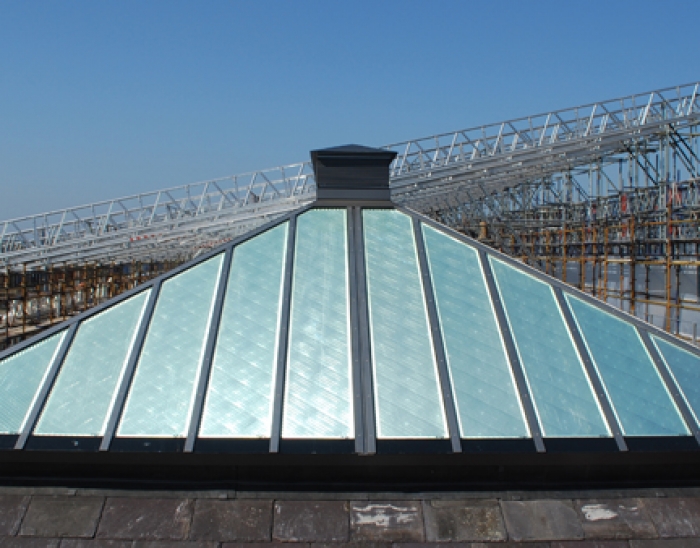Delft Daylight for the reopened National Gallery of Ireland
After six years of refurbishment and renovation works, the National Gallery of Ireland reopens its Historic Wings for the public today. The architectural office Heneghan Peng made natural light one of the central themes of their design. Octatube played an important part in making this happen by realizing different glass roof lights and suspended glass ceilings.

picture courtesy: Marie-Louise Halpenny
Unique about the play with natural light is the fact that the circumstances in the museum galleries always reflect the weather conditions outside in Dublin. Daylight is controlled yet its changes and variabilities remain visible. This has been made possible by calculating the lux levels cumulatively over the course of a year rather than retaining absolute values on the walls over time. In the Milltown Wing and Dargan Wing this is achieved by incorporating micro-louvres in the double glass units. These small lamellae eliminate direct sunlight and minimise the UV transmittance. Simultaneously the glass coating with a g-value of 0.14 significantly reduces solar gains and heat transfer. To provide the desired diffuse light for the paintings, the wings are featured with bespoke translucent laylight glazing.
The showpiece and pivot point of the museum is situated at an existing but previously unused light well. Here a new courtyard now functions as an exhibition space for sculptures while bringing in a lot of natural light. Also multiple historic windows that were hidden behind brickwork for decades have been reinstated, which provides additional light and orientation in the adjacent galleries. The Sculpture Court’s glass roof is supported by glass beams, and here as well the benefits of a bespoke glass product have been employed. The middle strip of the all-glass roof is provided with reflecting metal inserts in the cavity of the glass. Artificial light is pointed to the reflectors enabling additional light into the funnel-shaped courtyard space.

picture courtesy: Marie-Louise Halpenny
Although a small part of the gallery remained open during the construction works, the museum that dates from 1864 is completely rehabilitated as of today. The renovation completes the second and third phase of the gallery’s masterplan which aims to bring together its various wings into a coherent hole. A crucial part of the project had also been to hide away all new state-of-the-art installations under the forecourt of the new Merrion Entrance, sparing the historic galleries. The opening today coincides with an exhibition on the Delft painter Johannes Vermeer, whose paintings are illuminated by 'Delfts Daylight'.



